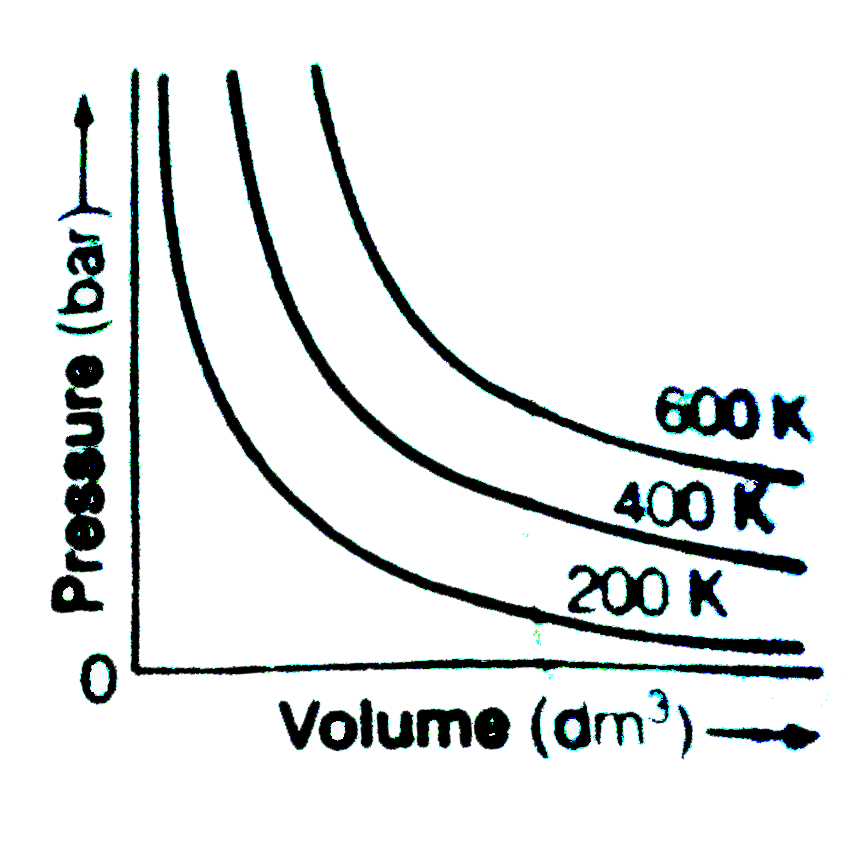A gas can be liquefied by pressure alone when its temperature
Higher than its critical temperature
Lower than its critical temperature
Equal to its critical temperature
None
The correct Answer is:B
To answer the question "A gas can be liquefied by pressure alone when its temperature...", we need to understand the concept of critical temperature and its implications for the liquefaction of gases.
1. Understanding Critical Temperature:
- The critical temperature (T_c) of a gas is the highest temperature at which a gas can be converted to a liquid by applying pressure. Above this temperature, no amount of pressure can liquefy the gas.
2. Condition for Liquefaction:
- A gas can be liquefied by pressure alone if its temperature is below the critical temperature. This means that if the temperature of the gas is less than T_c, applying pressure can bring the gas molecules closer together, allowing them to condense into a liquid.
3. Mathematical Expression:
- The critical temperature can be expressed mathematically as:
Tc=8a27Rb
where:
- a is a constant that measures the strength of intermolecular forces,
- b is a constant that measures the volume occupied by the gas particles,
- R is the universal gas constant.
4. Conclusion:
- Therefore, the answer to the question is that a gas can be liquefied by pressure alone when its temperature is less than the critical temperature.
Final Answer:
A gas can be liquefied by pressure alone when its temperature is less than the critical temperature.
---
- The critical temperature (T_c) of a gas is the highest temperature at which a gas can be converted to a liquid by applying pressure. Above this temperature, no amount of pressure can liquefy the gas.
- A gas can be liquefied by pressure alone if its temperature is below the critical temperature. This means that if the temperature of the gas is less than T_c, applying pressure can bring the gas molecules closer together, allowing them to condense into a liquid.
- The critical temperature can be expressed mathematically as:
Tc=8a27Rb
where:
- a is a constant that measures the strength of intermolecular forces,
- b is a constant that measures the volume occupied by the gas particles,
- R is the universal gas constant.
- Therefore, the answer to the question is that a gas can be liquefied by pressure alone when its temperature is less than the critical temperature.
A gas can be liquefied by pressure alone when its temperature is less than the critical temperature.
Similar Questions
The essential conditions for liquefaction of gases were discovered by Andrews in 1869 as a result of his study of pressure-volume-temperature relationship for CO2 . It was found that above a certain temperature, it was impossible to liquefy a gas whatever the pressure was applied. The temperature below which the gas can be liquefied by the application of pressure alone is called critical temperature (Tc). The pressure required to liquefy a gas at this temperature is called the critical pressure (Pc). The volume occupied by one mole of the substance at the critical temperature and pressure is called critical volume. Critical constants are related with van der waals' constant as follows:
Vc=3b,Pc=a27b2,Tc=8a27Rb
The values of critical volumes of four gases A, B, C and D are 0.025L, 0.312L, 0.245L and 0.432L respectively. The gas with larger molecular diameter will be :
View SolutionSeema visited a Natural Gas Compressing Unit and found that the gas can be liquefied under specific conditions of temperature and pressure . While sharing her experience with friends she got confused . Help her to identify the correct set of conditions.
View SolutionAssertion: A gas can be easily liquefied at any temperature below is critical temperature.
Reason: Liquification of a gas takes place when the average kinetic energy of the molecules is low.
View SolutionAssertion : Lower the cirtical temperature for a gas, more easily can it is liquefied.
Reason : Critical temperature is the temperature above which above which a gas cannot liquefied depending upon the pressure.
View SolutionAn ideal gas can never be liquefied because .
View SolutionThe variation of pressure with volume of the gas at different temperatures can be graphically represented as shown in figure. On the basis of this graph answer the following question.
(i) How will the volume of a gas change if its pressure is increased at constant temperature ?
(ii) At a constant pressure, how will the volume of a gas change if the temperature is increased from 200 K to 400 K ?

View SolutionA gas is filled in a vessel at a certain temperature and pressure. At the same temperature more gas is filled in the vessel so that its mass increases by 40%. Calculate the ratio of initial and finial pressures.
View SolutionA gas is filled in a vessel at a certain temperature and pressure. At the same temperature more gas is filled in the vessel so that its mass increased by 40%. Calculate the ratio of initial and final pressures.
View SolutionThe gas which can be liquefied under high pressure at 4∘C is
View SolutionA cylinder fitted with a piston is filled with a gas at a given temperature and pressure. Explain on the basis of the kinetic theory the increase in pressure of the gas as its temperature is increased.
View Solution
